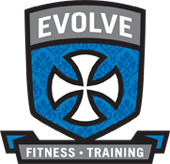You’ve made the decision to get in shape, you’ve signed up for classes at your local gym but do you have the correct shoes to wear? Here are a few things to remember when you go shopping.
Choices, choices . . .
You may feel overwhelmed by the choices available to you, particularly since the athletic footwear industry introduces more technologically sophisticated shoes with new designs and features every year. Slick ads and television commercials tout these features, but offer little in the way of advice in selecting the shoes that match your feet. One brand does not meet the needs of everyone, and the latest innovation or most expensive shoe with all the features may not be your best choice.
The information below will help you determine the right shoe for you, the one that will help you enjoy sports and lessen your chance of injury. The information includes what you should look for in sport-specific shoes, features in construction that provide comfort and prevent injuries, how to obtain a proper shoe fit.
Running Shoes
Conventional thinking suggests that a good running shoe should have ample cushioning to absorb shock, but there are advocates for minimalist running shoes that have with almost no cushioning. No data exist to say which type of shoe is better, but if you choose a cushioned shoe, look for overall shock absorption for the foot and good heel control. Although not a cure-all, these qualities in a running shoe may help prevent shin splints, tendinitis, heel pain, stress fractures and other overuse syndromes.
Joggers should wear a shoe with more cushioning impact. Running shoes are designed to provide maximum overall shock absorption for the foot. Such a shoe should also have good heel control. Although not a cure-all, these qualities in a running/sports shoe help prevent shin splints, tendinitis, heel pain, stress fractures and other overuse syndromes.
Walking Shoes
If walking is your sport or your doctor’s recommendation for cardiovascular conditioning, wear a lightweight shoe. Look for extra shock absorption in the heel of the shoe and especially under the ball of the foot (the metatarsal area). This will help reduce heel pain (plantar fasciitis and pump bumps) as well as burning and tenderness in the ball of the foot (metatarsalgia). A shoe with a slightly rounded sole or rocker bottom also helps to smoothly shift weight from the heel to the toes while decreasing the forces across the foot. Walking shoes have more rigidity in the front so you can roll off your toes rather than bend through them as you do with running shoes.
Cross Trainers
Cross-training shoes, or cross trainers, combine several of the above features so that you can participate in more than one sport. A good cross trainer should have the flexibility in the forefoot you need for running combined with the lateral control necessary for aerobics or tennis.
You do not necessarily need a different pair of shoes for every sport in which you participate. Generally, you should wear sport-specific shoes for sports you play more than three times a week. If you have worked out for some time injury-free, then stick with the particular shoe you have been wearing. There is really no reason to change.
For special problems, you may need a special shoe. A well-cushioned shoe may not be a good shoe for someone who over pronates. If your ankles turn easily, you may need to wear a shoe with a wide heel. If you have trouble with shin splints, you may need a shoe with better shock absorption.
Shoe Fit
The best designed shoes in the world will not do their job if they do not fit properly. You can avoid foot problems by finding a shoe store that employs a pedorthist or professional shoe fitter who knows about the different shapes and styles of shoes.
